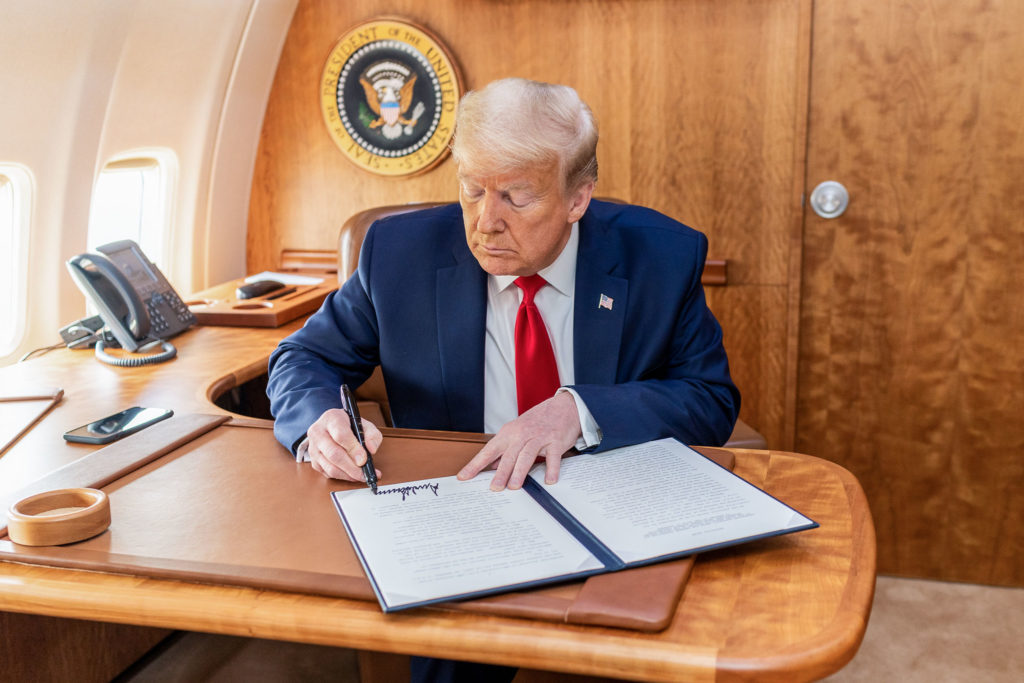The global commodity landscape was significantly altered recently by President Donald Trump’s unexpected imposition of a 50% tariff on specific copper imports. This surprising directive, announced on a Wednesday, immediately sent ripples through international markets, particularly affecting the copper sector, which had largely anticipated broader, more sweeping restrictions. The move highlights the intricate relationship between political decisions and immediate economic repercussions, setting a new precedent for trade policies involving essential industrial metals.
Contrary to initial expectations, the White House proclamation clarified that the stringent tariff would specifically target copper pipes, wiring, tubes, and other semi-finished copper products. Crucially, the administration’s detailed statement also provided explicit exclusions for a range of vital copper input materials, including copper scrap, ores, concentrates, mattes, cathodes, and anodes. This selective application differentiated the policy from a blanket tariff, easing some concerns within the primary mining and smelting industries.
The immediate market reaction to this selective copper tariff was stark and decisive. US copper prices on the Comex exchange plummeted by more than 17%, illustrating investors’ rapid repricing of the metal. This sharp decline unwound a recently established premium over the London global benchmark, a premium that had developed as shipments were strategically diverted to the US in anticipation of more expansive import duties.
Analysts quickly weighed in on the profound market shift. Tom Price, a prominent analyst at Panmure Liberum, characterized the development as an “epic backflip” by Trump on his stated import tariff policy, leading markets to actively re-price refined copper significantly lower. Furthermore, Natalie Scott-Gray, senior metals analyst at StoneX, remarked on the “massive market surprise” and projected further declines in US commodity markets copper prices. Anant Jatia, founder of Greenland Investment Management, anticipated that London copper prices would surpass US prices in the short term as American inventories built up, highlighting the global arbitrage opportunities emerging from the new trade dynamics.
While the measure was framed to aid certain domestic manufacturers reliant on finished copper products, it paradoxically offered little immediate boost to the constrained US mining industry. For years, the domestic copper mining sector has advocated for permitting reform or other governmental actions to fuel growth, but this tariff specifically on processed goods did not directly address their core concerns regarding raw material production. The nuanced policy primarily benefits downstream processing rather than upstream extraction.
Interestingly, the specific details of the tariff provided an unexpected advantage to some of the world’s largest copper-producing nations. Countries such as Chile and Peru, which are significant suppliers of copper to the United States, are effectively aided by the exclusion of raw and semi-processed copper materials. Chile’s Codelco, the world’s largest copper producer, publicly acknowledged the positive implications of the policy for both the company and the Chilean economy, given its dominant role in supplying refined copper to the US.
The decision stemmed from a comprehensive US investigation conducted under Section 232 of the Trade Expansion Act of 1962, which President Trump had initiated in February. Commerce Secretary Howard Lutnick submitted the crucial report to the White House on June 30, forming the basis for the subsequent proclamation. This legal and procedural framework underscores the strategic considerations underpinning the administration’s US trade policy.
Looking ahead, President Trump indicated that further tariffs might still be imposed, signaling an ongoing evaluation of the economic impact of these measures. He has requested Commerce Secretary Lutnick to provide an updated assessment of the domestic copper tariffs market by June 2026. At that juncture, the administration will consider implementing a phased universal import duty on refined copper, potentially starting at 15% in 2027 and escalating to 30% in 2028. Alongside these tariff considerations, the order also mandates steps to bolster the domestic copper industry, including a requirement for 25% of high-quality scrap produced in the US to be sold within the country, aiming to support the local supply chain.
Major global players in the mining industry, such as BHP, which operates the world’s largest copper mine in Chile, and Antofagasta, a significant Chilean copper exporter with ambitions to establish a US copper mine, did not immediately respond to inquiries for comment following the tariff announcement. Their silence highlights the careful monitoring by industry leaders as they assess the long-term implications of these evolving trade regulations.






Leave a Reply